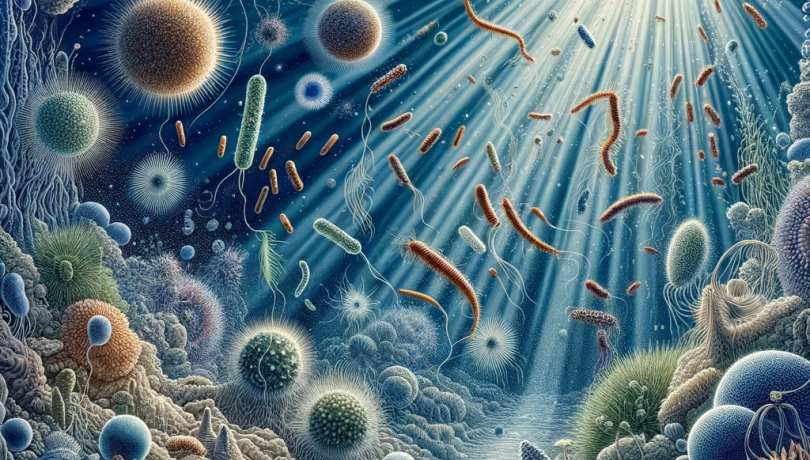The findings are reported in a study led by the ICM-CSIC published this week in Science Advances.

A new study from the Institut de Ciències del Mar (ICM-CSIC) has revealed the mechanisms that structure the communities of the smallest plankton in the ocean, the picoplankton, from the surface to about 4000 meters depth. These microscopic organisms are important because they play a key role in the cycling of various nutrients and carbon fixation. They are also essential for the functioning of marine food webs.
Details of the work, in which the Federal University of São Carlos (UFSCar, Brazil), the Spanish Institute of Oceanography (IEO-CSIC) in Gijón, the University of Las Palmas de Gran Canaria (ULPGC), the National Museum of Natural Sciences (MNCN-CSIC) and the King Abdullah University of Science and Technology (KAUST, Saudi Arabia) have also participated, can be found in an article published this week in the prestigious journal Science Advances.
Until now, it was unclear how the ecological mechanisms that influence the distribution of picoplankton in different oceanic layers vary. However, the study now published suggests that the way these communities are structured is mainly determined by changes in environmental selection -determining which microorganisms proliferate in different environments- and dispersal -determining how different species are transported-.
This has implications for our understanding of the effects of global change, as it implies that future environmental changes will impact environmental selection, which could lead to changes in the current structure of marine picoplankton and, consequently, in marine ecosystems as a whole, with effects that are still difficult to predict.
"Knowing the ecological mechanisms that structure the communities of the smallest plankton in the ocean has implications for basic science, as it can help us advance the field of microbial ecology and biogeography. In addition, it will allow us to better understand the impacts of global change on marine ecosystems," explains Ramiro Logares, ICM-CSIC researcher and co-author of the study.
For this study, the team analyzed more than 450 samples collected at different points of the planet during the Malaspina 2010 and Hotmix oceanographic campaigns. These samples cover the epi- (0-200 meters), meso- (200-1,000 meters), and bathypelagic (1,000-4,000 meters) zones, which has allowed the researchers to obtain a complete picture of the picoplankton communities at different depths.
The environment and dispersal, key factors
One of the most relevant findings of the study is that the mechanisms that influence the structure of picoplanktonic communities vary with depth. In this sense, the analyses indicate that the influence of environmental variability decreases with depth, while barriers to microorganism’s dispersal increase as we go deeper into the deep ocean.
"This suggests that differences in habitat heterogeneity and barriers to dispersal, such as different water masses and bottom topography, play an important role in shaping these communities," says Pedro Junger, the paper's lead author.
Another remarkable result of the study is that the differences between picoplankton communities are positively correlated with environmental variability and water masses, i.e., the more heterogeneous the environment, the more different the microbial communities tend to be.
Finally, the work suggests that in semi-enclosed or enclosed seas with high environmental variability due to historical or geographical factors, as in the Mediterranean Sea, microbial communities tend to be more differentiated than in other oceanic regions.
Overall, the study highlights the importance of understanding picoplankton biogeography in the current context of global change, as these communities are considered barometers of the ecological health of the ocean and can provide much information on climate impacts. In fact, according to the authors, "picoplankton responses to environmental variability could inform conservation policies by acting as early warning signals of changes in marine ecosystem health."
"By unraveling the mechanisms that structure these communities, we can better predict how these organisms will respond to environmental changes and their potential impacts on marine ecosystems," they conclude.